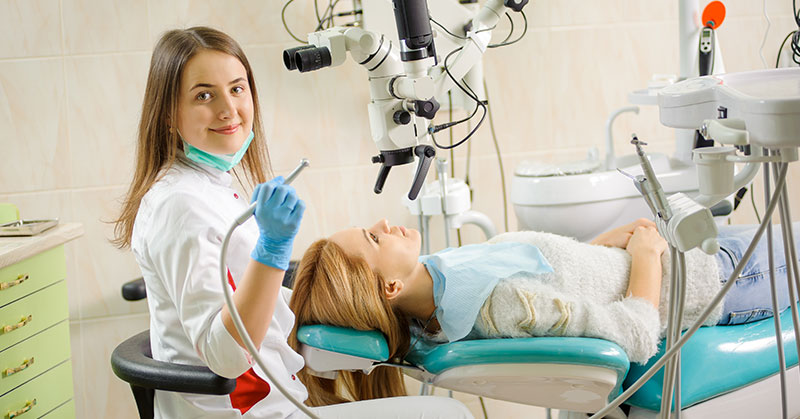For those of us not directly involved in the dental or medical profession, the clinical terms associated with those fields can be somewhat of a mystery. But if you’re about to undergo some type of dental procedure or oral surgery, it’s important to have at least a basic understanding of the difference between dental sedation and anesthesia.
Dental Sedation
Most of us suffer from at least a little bit of anxiety when we visit the dentist. But for some people, the stress of having any type of dental work done can be overwhelming. The purpose of dental sedation is to help us feel more relaxed and at ease when visiting the dentist. Fortunately, modern dental technology provides patients with several different options when it comes to dental sedation, including the following:
- Nitrous oxide – Also referred to as “laughing gas,” nitrous oxide leaves you feeling awake but very much at ease and even a little giddy. It wears off quickly, so you can drive yourself home after your appointment.
- Oral sedation – If you have a higher level of anxiety, your dentist might prescribe sedation that you take in pill form right before your appointment. You’ll still be awake, but probably won’t remember the whole procedure. You’ll need a ride home after your appointment.
- IV sedation – The most potent form of dental sedation comes via IV, which is administered in the dentist’s chair. You’ll be conscious, but not really aware of what’s happening. Arrange for a ride home if you have this form of sedation.
Anesthesia
There are two very different types of anesthetic used in dentistry and oral surgery:
- Novocaine – This topical anesthetic is applied to the teeth and surrounding gum tissue right before your dentist does any type of procedure. It’s safe to say that anyone who has had any type of dental work done has probably experienced the numbness associated with this topical anesthetic – and is grateful for it!
- General anesthesia – The main difference between sedation and general anesthesia is that sedation relaxes you but allows you to remain awake; while general anesthesia renders you unconscious. Although general anesthesia is used in dentistry, it’s typically reserved for wisdom teeth removal and other forms of oral surgery.
Thanks to modern technology, none of us need to fear the dentist! To find out more about sedation and anesthesia used in dental procedures, talk to your dentist.


